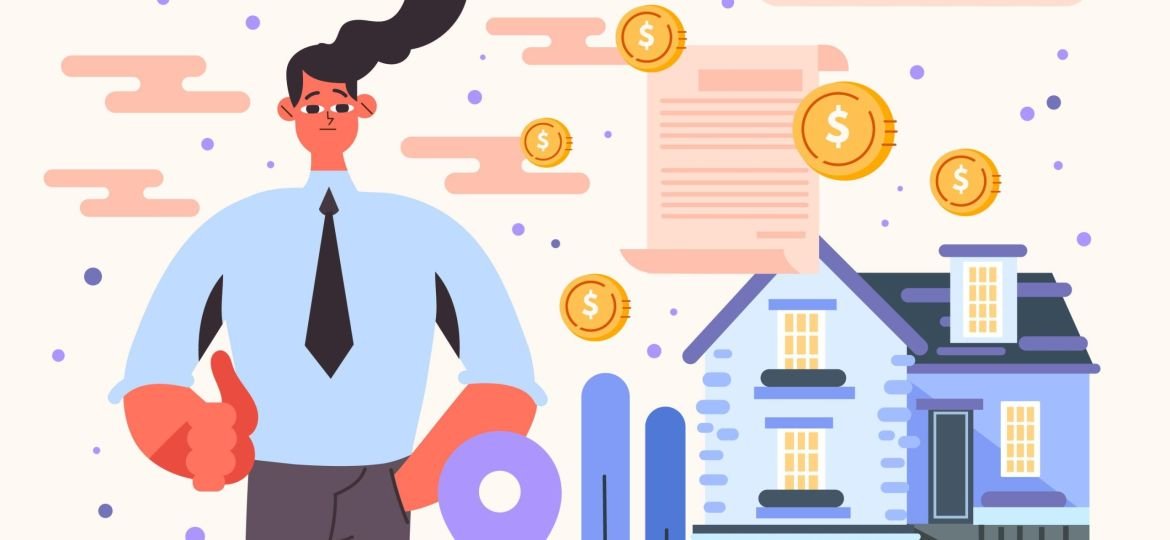
Owning a home is a major financial milestone for many people, but the monthly mortgage payments can feel like a never-ending burden. If you’re like me, you’re probably eager to become mortgage-free as soon as possible and start reaping the benefits of having that extra cash flow each month. The good news is, there are several proven strategies you can use to pay down your mortgage more quickly and save thousands in interest over the life of the loan.
In this comprehensive guide, I’ll walk you through the top tactics for accelerating your mortgage payoff, including some creative approaches you may not have considered. Whether you have a little extra cash to put towards your principal each month or you’re willing to make some lifestyle changes, there are options to fit every situation. By the end, you’ll have a clear action plan to become mortgage-free years ahead of schedule.
Increase Your Monthly Payments
The most straightforward way to pay off your mortgage faster is to simply make higher monthly payments. Even a small increase can make a big difference over time. For example, let’s say you have a 30-year, $300,000 mortgage with a 4% interest rate. If you stick to the standard payment of $1,432 per month, you’ll end up paying a total of $515,520 over the life of the loan, including $215,520 in interest.
However, if you were to increase your monthly payment by just $100 – paying $1,532 per month instead – you’d pay off the mortgage 5 years earlier and save $36,600 in interest. That’s a significant amount of money that could be put towards other financial goals, like saving for retirement or taking a dream vacation.
Of course, not everyone has the extra room in their budget to increase their payments. If that’s the case for you, there are other strategies to explore.
Make Bi-Weekly Payments
Another simple but effective tactic is to switch to bi-weekly mortgage payments. Instead of making one full payment per month, you’d make half-payments every two weeks. This results in the equivalent of 13 full monthly payments per year, instead of the standard 12.
The math works out like this:
- Standard monthly payment: $1,432
- Bi-weekly payment: $716 (half of $1,432)
- 13 bi-weekly payments per year = $9,308
- 12 standard monthly payments per year = $17,184
By making that extra half-payment each year, you can shave 4-5 years off a 30-year mortgage and save tens of thousands in interest. The key is to make sure your lender applies the extra payments directly to the principal, not just holding them in escrow until the next due date.
Bi-weekly payments work especially well if you get paid every two weeks, as the timing will line up nicely. However, you can also set up automatic bi-weekly payments even if you’re paid monthly. The small change in your cash flow each month is usually negligible, but the long-term savings are substantial.
Refinance to a Shorter Term
If you have the financial means to take on a higher monthly payment, you could consider refinancing your mortgage to a shorter loan term, such as 15 or 20 years. The interest rate on these shorter-term loans is typically lower than a standard 30-year mortgage, which can result in big savings.
For example, let’s say you have a $300,000 mortgage at 4% interest. The monthly payment on a 30-year loan would be $1,432, while a 15-year loan at 3.5% interest would be $2,144. That’s a difference of $712 per month – a significant jump.
However, over the life of the loan, you’d pay a total of $257,520 in interest on the 15-year mortgage, compared to $215,520 on the 30-year. That’s a savings of $58,000! Plus, you’d be mortgage-free 15 years sooner.
The tradeoff, of course, is the higher monthly payment. Make sure to carefully crunch the numbers and ensure you can comfortably afford the new payment before making the switch. You may also need to pay closing costs to refinance, which can range from 2-5% of the loan amount.
Make Lump Sum Payments
If you come into a lump sum of money, such as a work bonus, tax refund, or inheritance, consider putting all or a portion of it directly towards your mortgage principal. This is one of the most impactful ways to accelerate your payoff, as it immediately reduces the amount of interest you’ll owe over the life of the loan.
Let’s go back to our $300,000 mortgage example. If you were to make a one-time $10,000 payment towards the principal, you’d save $5,738 in interest and pay off the loan 10 months earlier. That’s a significant return on your investment.
Even smaller lump sum payments can make a difference. An extra $5,000 applied to the principal would save you $2,869 in interest and shave 5 months off the loan term. Of course, the more you can afford to put down, the greater the impact.
The key is to ensure the lump sum payment is applied correctly. Make sure to specify that you want the funds to go directly towards the principal, not just held in escrow for future payments. Also, be aware that some lenders may charge a prepayment penalty for paying off a significant portion of the loan early, so check the terms of your mortgage.
Refinance to a Lower Interest Rate
If you’ve built up some equity in your home and your credit score has improved since you first got your mortgage, you may be able to refinance to a lower interest rate. This can save you a substantial amount of money over the life of the loan, even if it doesn’t necessarily shorten the term.
For example, let’s say you originally had a 30-year, $300,000 mortgage at 5% interest. Your monthly payment would be $1,610, and you’d pay a total of $279,600 in interest over the full term.
If you were able to refinance that same $300,000 loan to 4% interest, your new monthly payment would be $1,432 – a savings of $178 per month. Over the remaining 25 years of the loan, that would add up to $53,400 in interest savings, even though the term itself didn’t change.
The key is to make sure the closing costs and fees associated with the refinance don’t outweigh the long-term interest savings. Generally, it’s worth it if you plan to stay in the home for at least 5 more years. Use an online mortgage refinance calculator to crunch the numbers and see if it makes sense for your situation.
Comparison Table: Mortgage Payoff Strategies
To give you a better sense of the potential savings and timelines, here’s a comparison table outlining the impact of some of the strategies we’ve discussed:
| Strategy | Original Loan | Revised Loan | Interest Saved | Payoff Time Reduced |
|---|---|---|---|---|
| Increase Monthly Payment by $100 | $300,000 at 4% over 30 years | $300,000 at 4% with $1,532 monthly | $36,600 | 5 years |
| Bi-Weekly Payments | $300,000 at 4% over 30 years | $300,000 at 4% with bi-weekly payments | $32,400 | 4-5 years |
| Refinance to 15-Year Loan | $300,000 at 4% over 30 years | $300,000 at 3.5% over 15 years | $58,000 | 15 years |
| $10,000 Lump Sum Payment | $300,000 at 4% over 30 years | $290,000 at 4% over 29 years, 2 months | $5,738 | 10 months |
| Refinance to 4% Interest Rate | $300,000 at 5% over 30 years | $300,000 at 4% over 30 years | $53,400 | 0 years |
As you can see, each strategy has the potential to save you thousands in interest and shave years off your mortgage. The best approach will depend on your financial situation, goals, and willingness to take on a higher monthly payment.
Conclusion
Paying off your mortgage early is an admirable financial goal that can provide tremendous long-term benefits. Not only will you save a sizable amount in interest, but you’ll also unlock that monthly payment to put towards other priorities, like retirement, travel, or investing.
While the journey to becoming mortgage-free may require some sacrifice and discipline, the payoff is well worth it. By leveraging one or more of the strategies we’ve covered – increasing payments, refinancing, making lump sum contributions, and switching to bi-weekly payments – you can potentially shave 5-15 years off your loan and save tens of thousands in the process.
The key is to carefully evaluate your options, crunch the numbers, and choose the approach (or combination of approaches) that best fits your unique financial situation and goals. With a solid plan in place, you can confidently take the necessary steps to become mortgage-free years ahead of schedule.
So what are you waiting for? Start exploring these strategies today and take that crucial first step towards owning your home free and clear. Your future self will thank you!
Frequently Asked Questions About Paying Down Your Mortgage Faster
1. Can I pay off my mortgage early without penalty?
Yes, most mortgages allow for early repayment without penalties. However, it’s essential to review your loan agreement or contact your lender to confirm that there are no prepayment penalties or restrictions.
2. Will making extra payments towards my mortgage automatically shorten the term?
Yes, any additional payments made towards your mortgage principal will help reduce the total amount of interest you pay over the life of the loan and can shorten the term, depending on the amount and frequency of the extra payments.
3. How do bi-weekly payments differ from monthly payments in terms of paying off a mortgage faster?
Bi-weekly payments result in 13 full payments per year instead of the standard 12 monthly payments. This extra payment each year can help you pay down your mortgage faster and save on interest costs.
4. What is the benefit of refinancing to a shorter loan term?
Refinancing to a shorter loan term, such as 15 or 20 years, can result in a lower interest rate and substantial interest savings over the life of the loan. While monthly payments may be higher, you’ll pay off your mortgage sooner and build equity faster.
5. Are there tax implications for paying off a mortgage early?
Paying off your mortgage early does not typically have direct tax implications. However, it’s advisable to consult with a tax professional to understand any potential impacts on your tax situation.
6. How does making lump sum payments affect the interest I pay?
Making lump sum payments directly towards your mortgage principal reduces the outstanding balance, which in turn lowers the amount of interest you’ll pay over time. It can significantly accelerate your mortgage payoff and save you money.
7. Is it better to increase monthly payments or make lump sum payments?
Both strategies are effective in paying down your mortgage faster. Increasing monthly payments can be a consistent way to chip away at the principal, while lump sum payments provide a more significant immediate impact on reducing interest costs.
8. Can I combine multiple strategies to pay off my mortgage faster?
Absolutely! Combining strategies such as increasing monthly payments, making lump sum contributions, and refinancing to a shorter term can maximize your savings and expedite your journey to a mortgage-free life.
9. How do I know which strategy is best for my financial situation?
Consider factors such as your budget, long-term financial goals, risk tolerance, and current interest rates when choosing a strategy to pay off your mortgage faster. It’s advisable to consult with a financial advisor or mortgage specialist for personalized guidance.
10. Will paying down my mortgage faster affect my credit score?
Paying off your mortgage early can have a positive impact on your credit score by demonstrating responsible financial management and reducing overall debt. However, it’s essential to maintain other lines of credit and continue making timely payments to sustain a healthy credit profile.
11. Can I switch between different payment strategies during my mortgage term?
Yes, you can adjust your payment strategy at any time during your mortgage term based on your financial circumstances and goals. Whether you choose to increase monthly payments, make lump sum contributions, or refinance, flexibility is key in achieving your mortgage payoff goals.
















